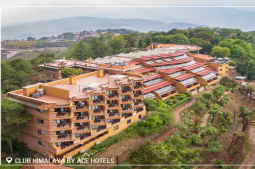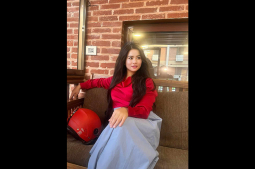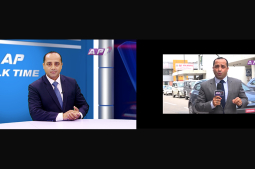'Ramailo Games' promotes local content and family games
2 years ago
Sr. correspondent at Republica.

Salina Tamang is the Girls Education Program Manager at Room to Read Nepal. She has more than 18 years of experience working in the development sector. She has worked with marginalized and stigmatized groups (sexual and gender minorities) of Nepal in their fight against discrimination and social exclusion. Currently, her work is to develop girls toward empowerment through life skills, mentoring and ensuring that they complete school in an environment which is gender friendly, safe and accessible.
Here, Tamang shared the valuable insights of her experience working for girls’ education and empowerment to My City. Here are the excerpts:
Girls Education Program in Nepal started in 2001 and works with the objective of ensuring girls complete secondary level education and have the necessary life skills to negotiate key life decisions in their lives. We believe in the power of life skills- skills like critical thinking, negotiating, and perseverance that can help young women remove barriers and become leaders of their own lives.
Through our Girls’ Education Program (GEP), we support girls to stay in school longer, progress towards completion of secondary school, and acquire the skills and agency (life skills) they need to make informed choices about their lives and realize their potential. Our approach allows these girls to be prepared for their next steps in life – be it tertiary or vocational education, employment or domestic life and become agents of change. Our program prepares them to realize their own potential and take purpose action towards personal and community goals. We work on four major components—life skills, mentoring, family, school and community engagement; and material support.
Total GEP participants is 4289 in 77 schools of 11 districts- Banke, Bardiya, Tanahun, Nuwakot, Kathmandu, Bhaktapur, Lalitpur, Sindhupalchowk, Chitwan, Kaski, Kavre.
An educated woman can identify different forms of discrimination and stigma; she will prevent herself from such negative forces and can also educate other women in the family and community to do the same. She can be a breadwinner of the family by earning more as a career women contributing to the economic situation of her family and also of the country. An educated woman can bring up a healthy child and help them to get properly educated. She will value her daughter’s education which will later contribute to the literacy rate going up in the country. Women can also contribute to the agriculture sector bringing in technology and entrepreneurship to help their family and community.
We are currently focusing on 2 things—reaching out to the girls individually and doing Individual mentoring (phone call) and radio program/SMS for remote learning— where the activities we are doing within two initiatives:
And following are the response:
Education Cluster Contingency Plan for COVID 19 has projected the drop out in the three scenarios to be 5.91 lakh, 8.59 lakh and 32.21 lakhs as a result of COVID 19.
Regarding reopening of the schools three scenarios has been expected.
• Scenario 1: Schools reopen before the new fiscal year (mid-July 2020)
• Scenario 2: School reopen before Dashain (September 2020)
• Scenario 3: Schools remain closed for the entire academic year
The overall objective of this Education Cluster Contingency Plan is to prevent the spread of COVID-19 from education institutions into local communities by providing safe learning environments by putting in place appropriate prevention measures in schools and awareness activities in ECED/PPE centers, community, institutional and religious schools and communities.
Life skills education (LSE) is central to Room to Read's Girls’ Education Program goal. Life skills are the knowledge, attitudes, and abilities that enable girls to deal effectively with the demands and challenges in their everyday lives—whether at home, school, work, or in the larger community. Room to Read believes that when girls have life skills they can more effectively negotiate life decisions, including the decision to stay in school. Research studies and our experience support these strong links. Life skills education programs improve student-teacher relations, girls’ enrollment, attendance, completion rates, and academic performance.
During this difficult time, it is essential for us to be connecting to our participants. We’re ensuring that the girls we work with stay connected with local, trained female mentors to help them get through this time and continue their studies. We are also looking for ways to continue facilitating peer support groups – a critical component of our program – and using our Risk and Response Tool, a powerful early warning system that allows staff to identify and act on risk factors for individual girls.
Our educational interventions don’t depend on Internet connectivity – which is largely unavailable in the areas we serve – but human connectivity. Our teams are providing distance learning via channels that are most accessible to low-income children telephone and radio channels.

- by Republica

- by Republica

- by Republica

Leave A Comment